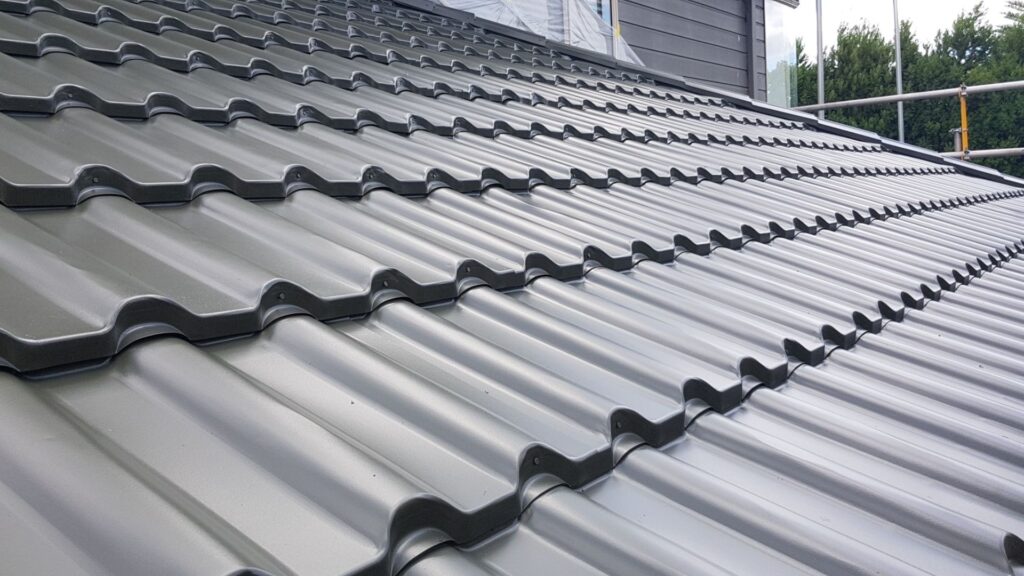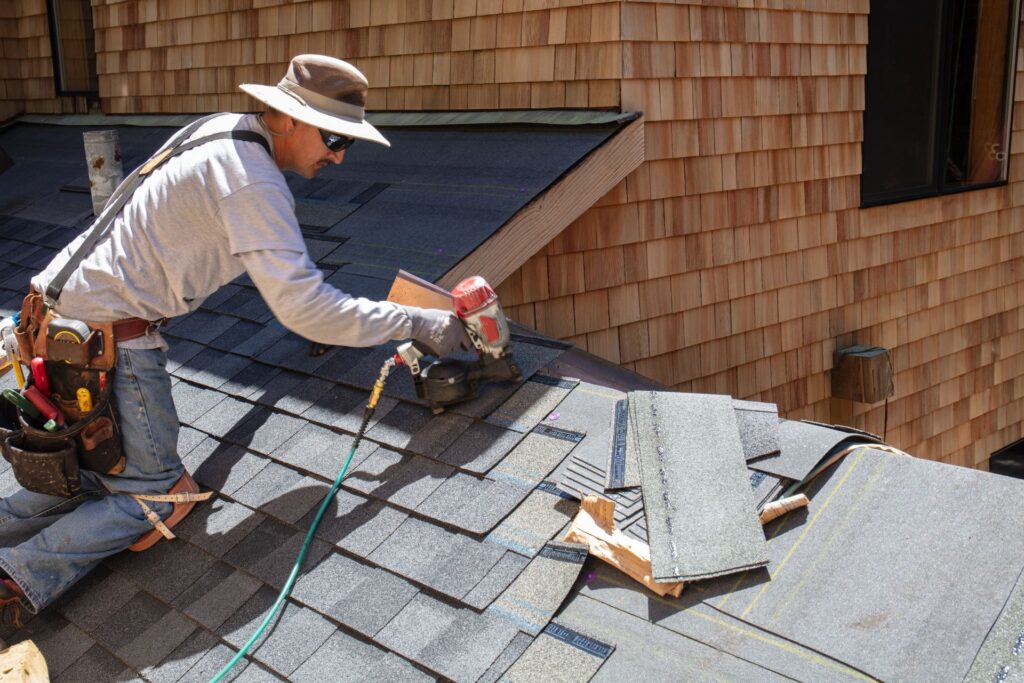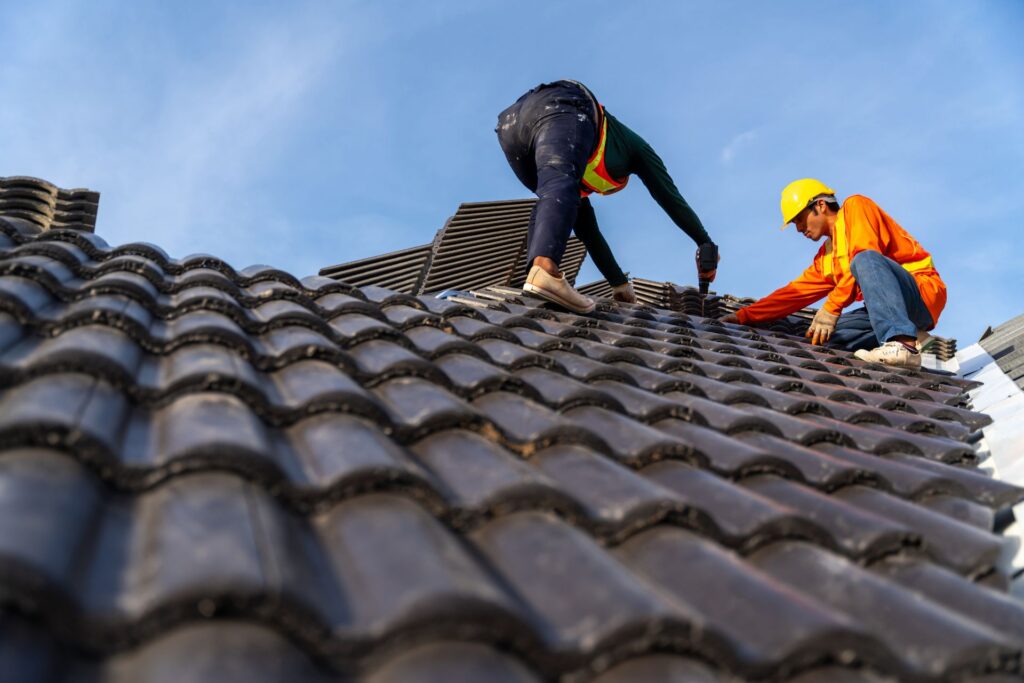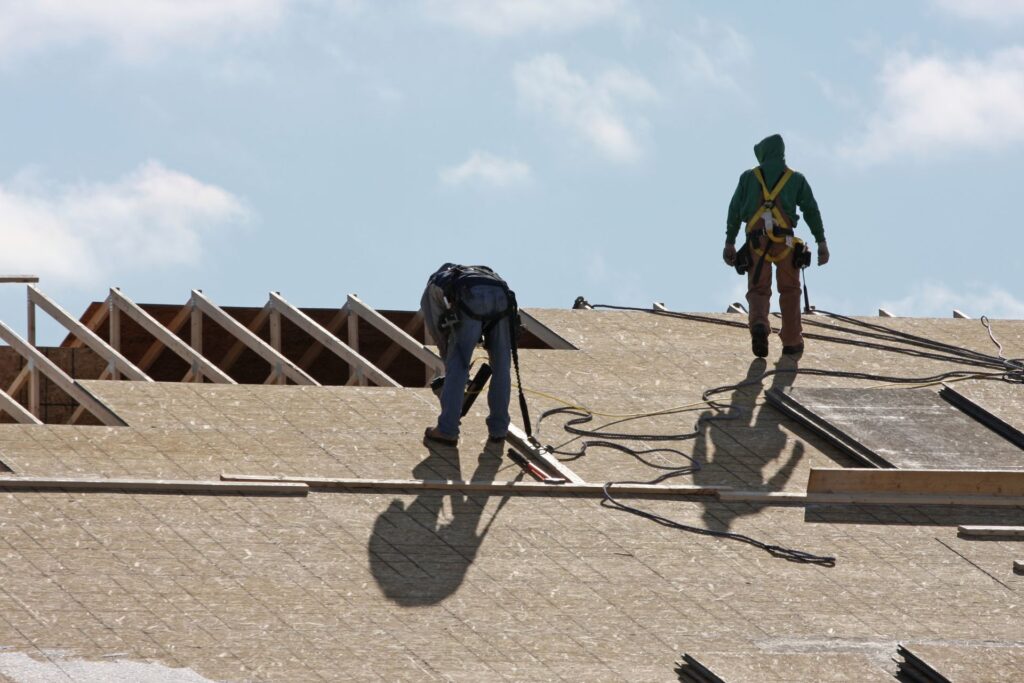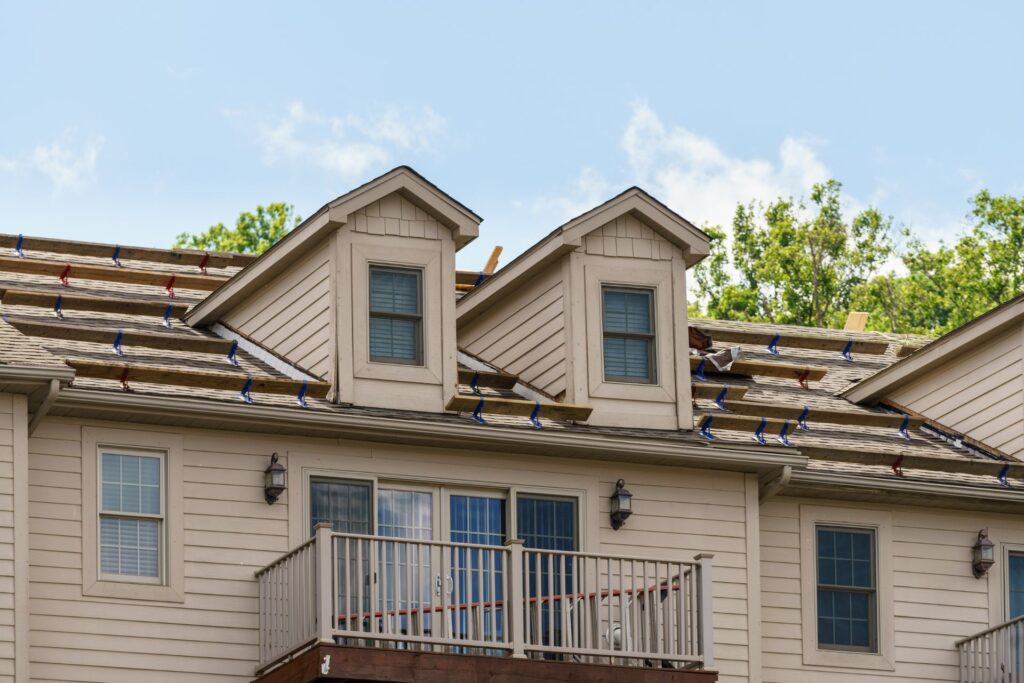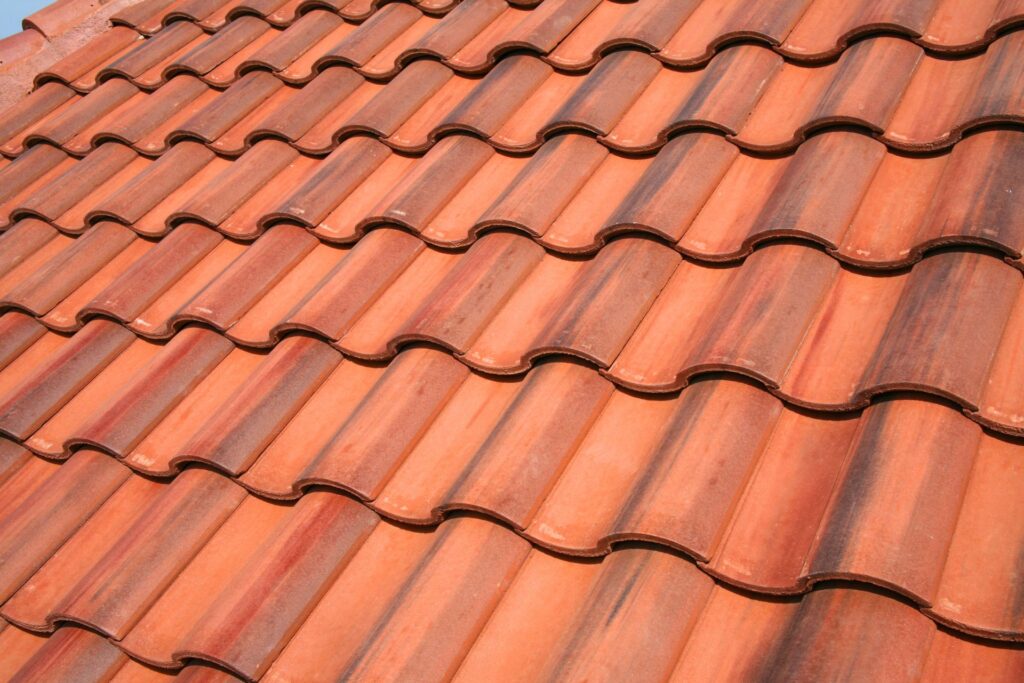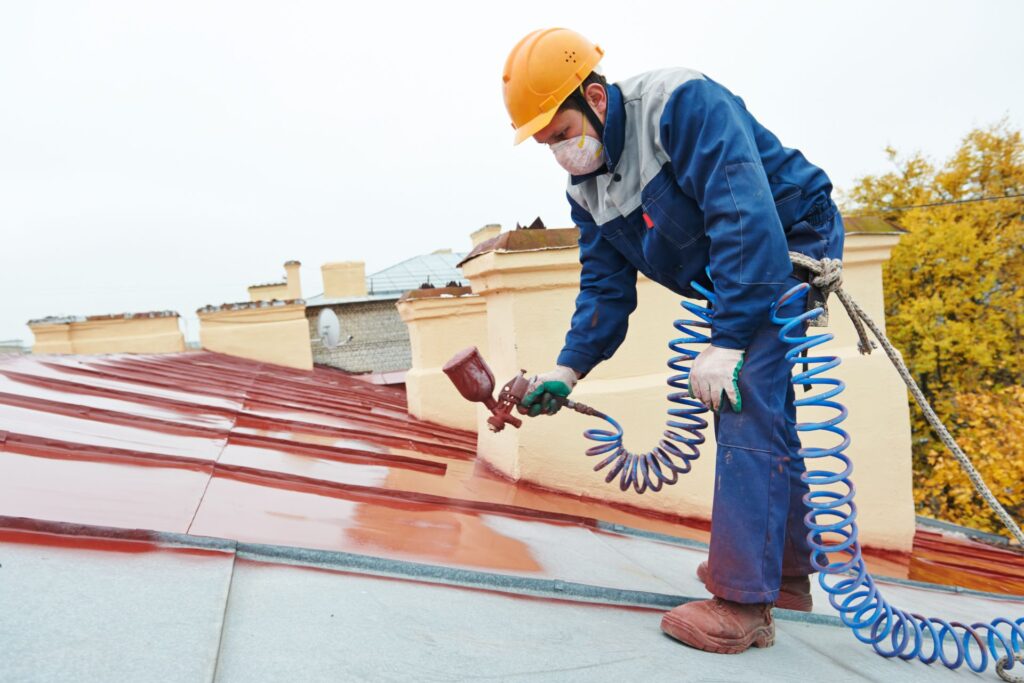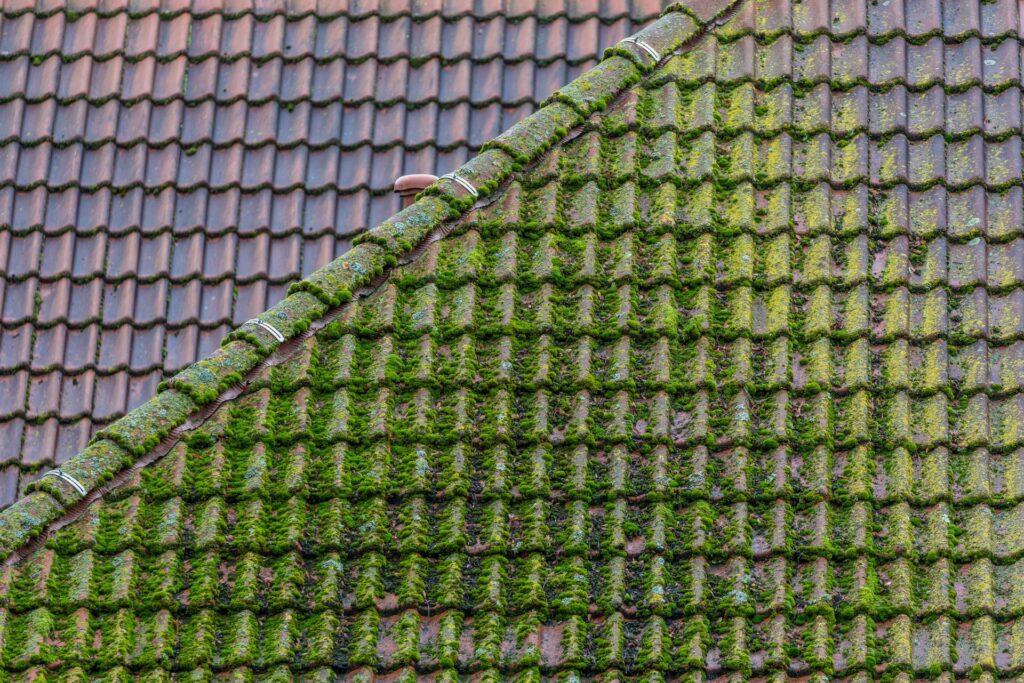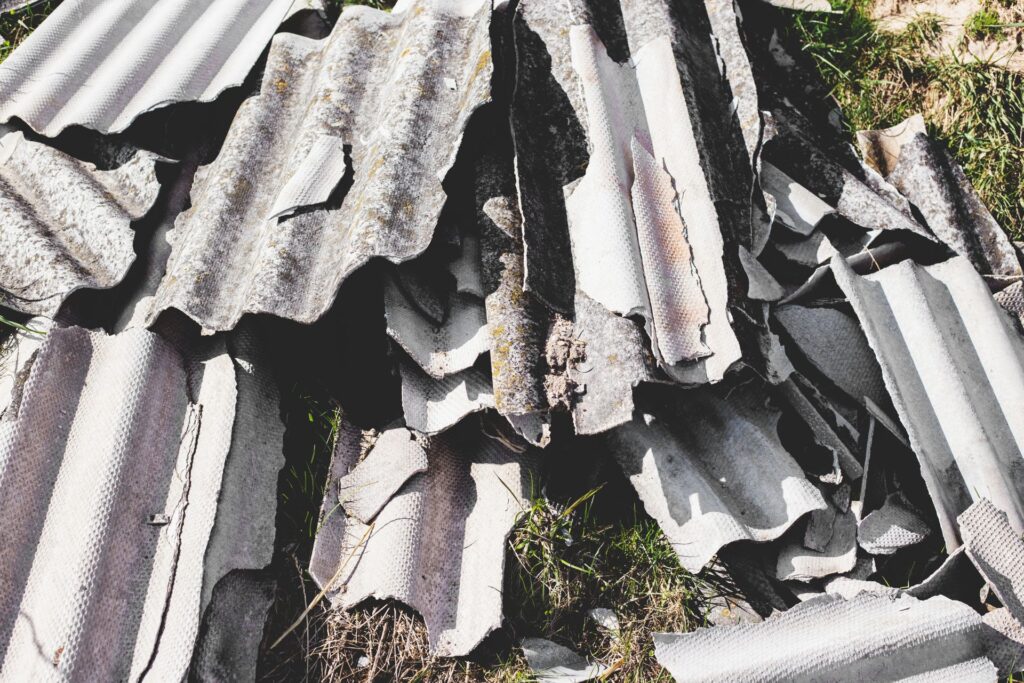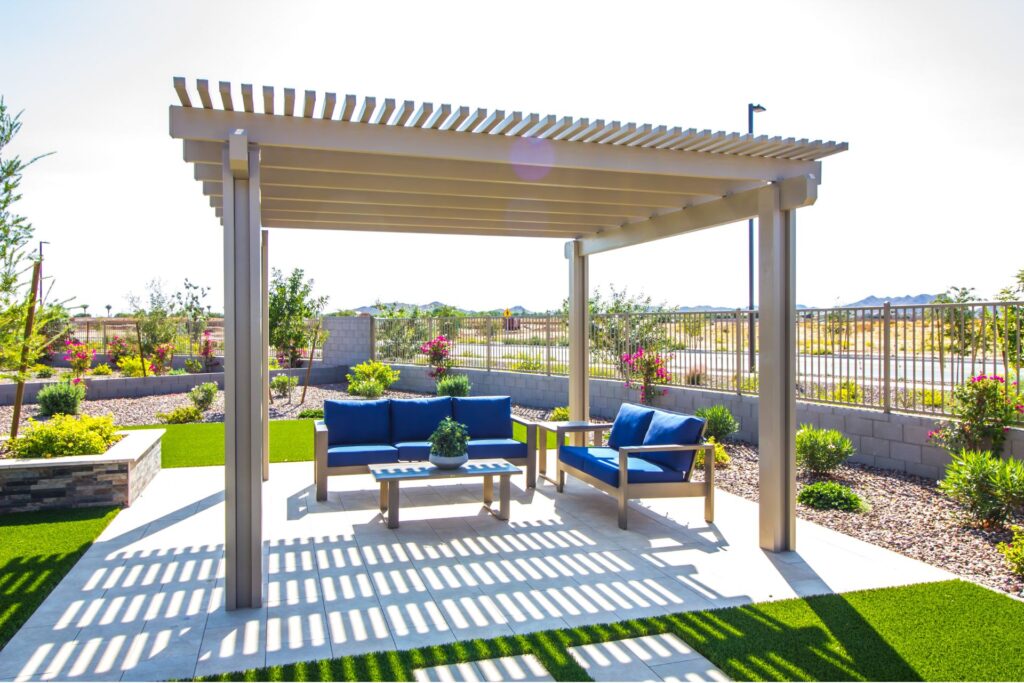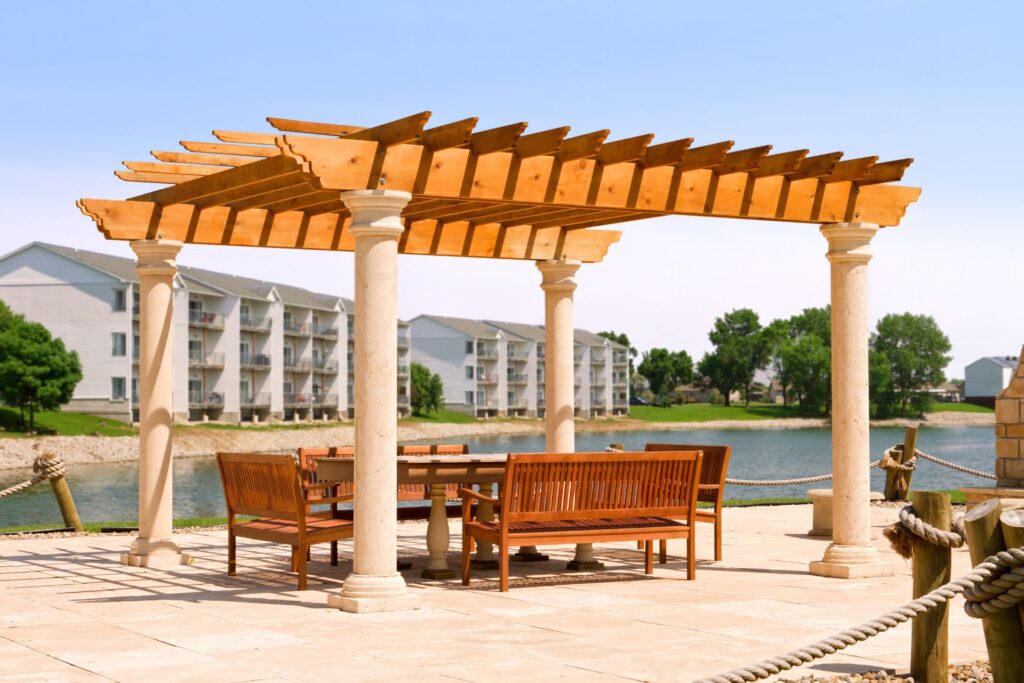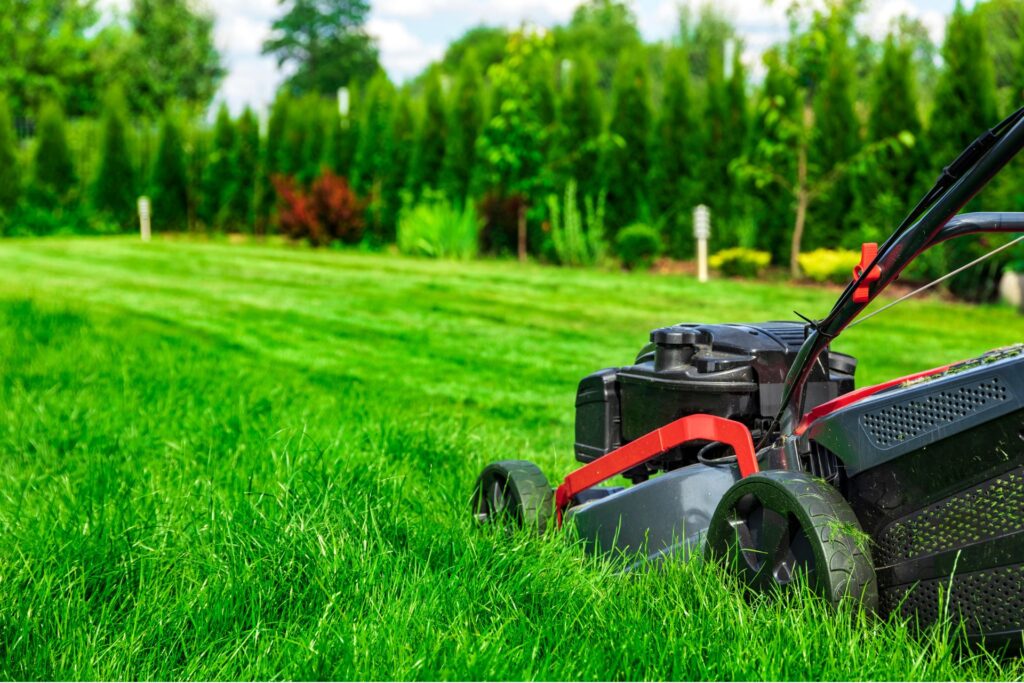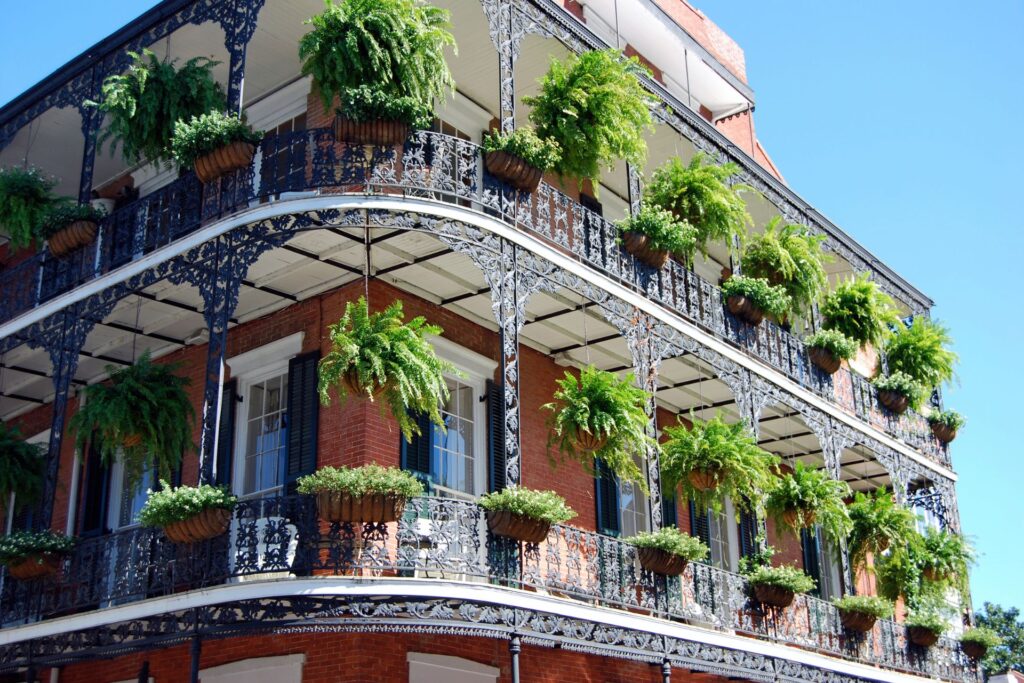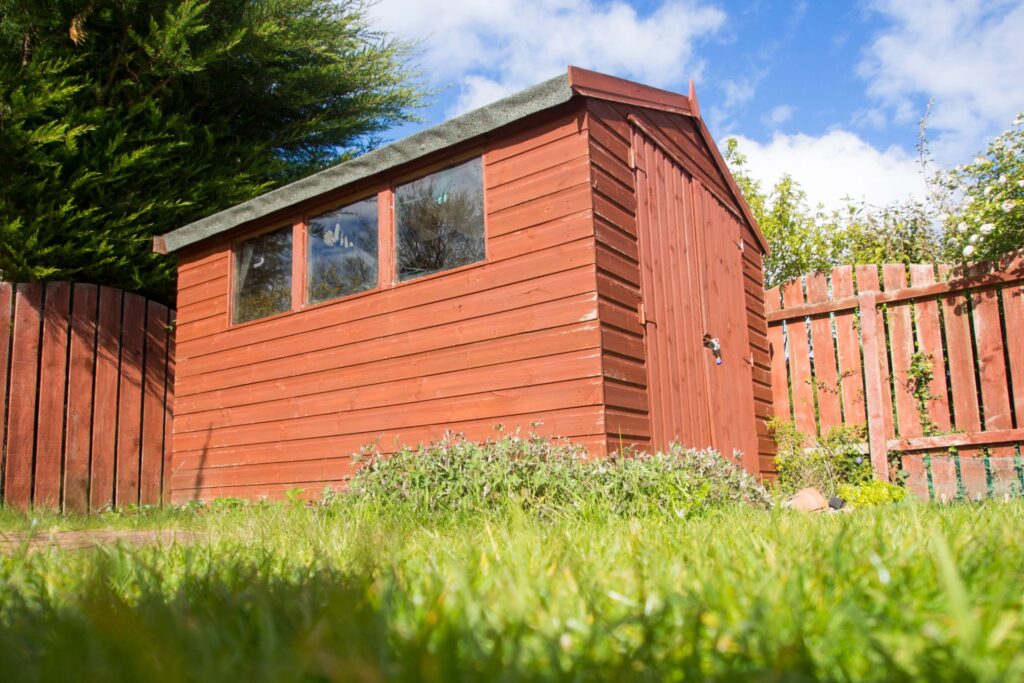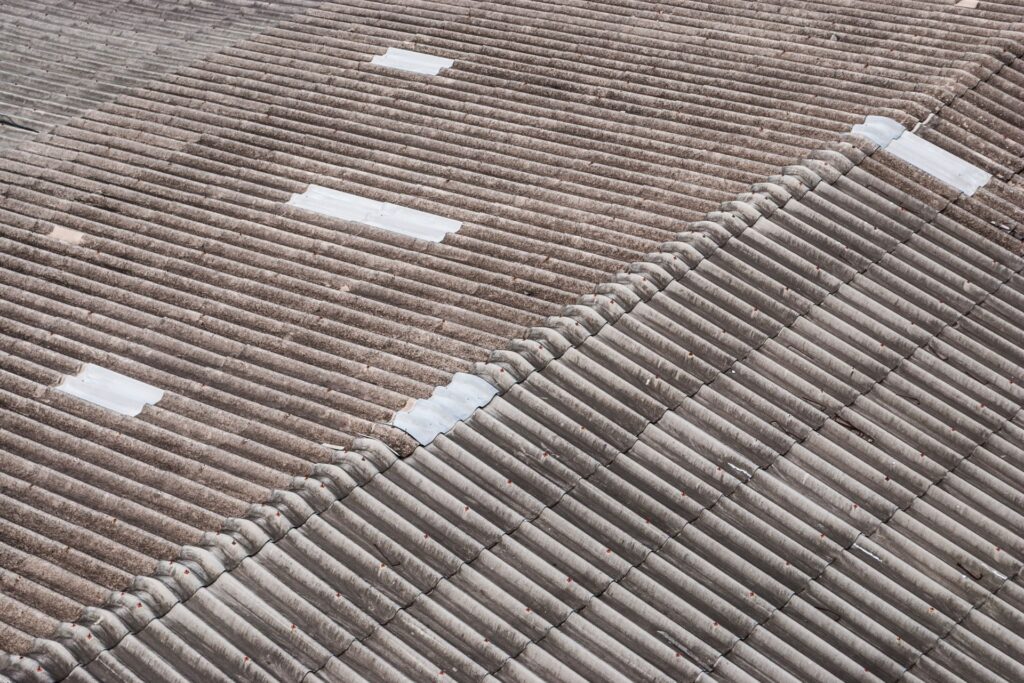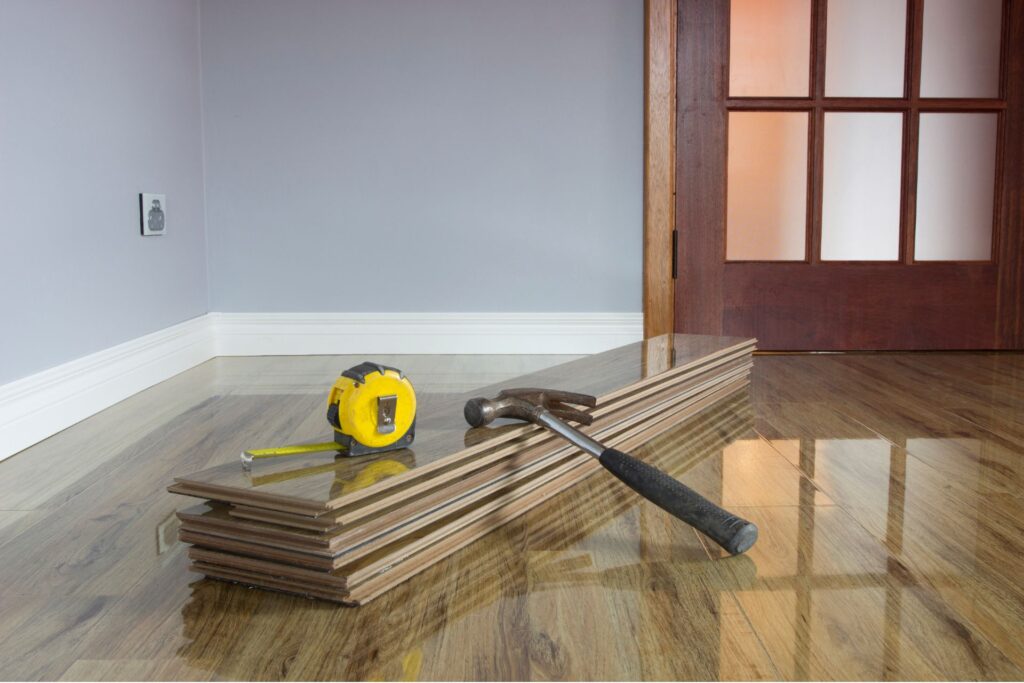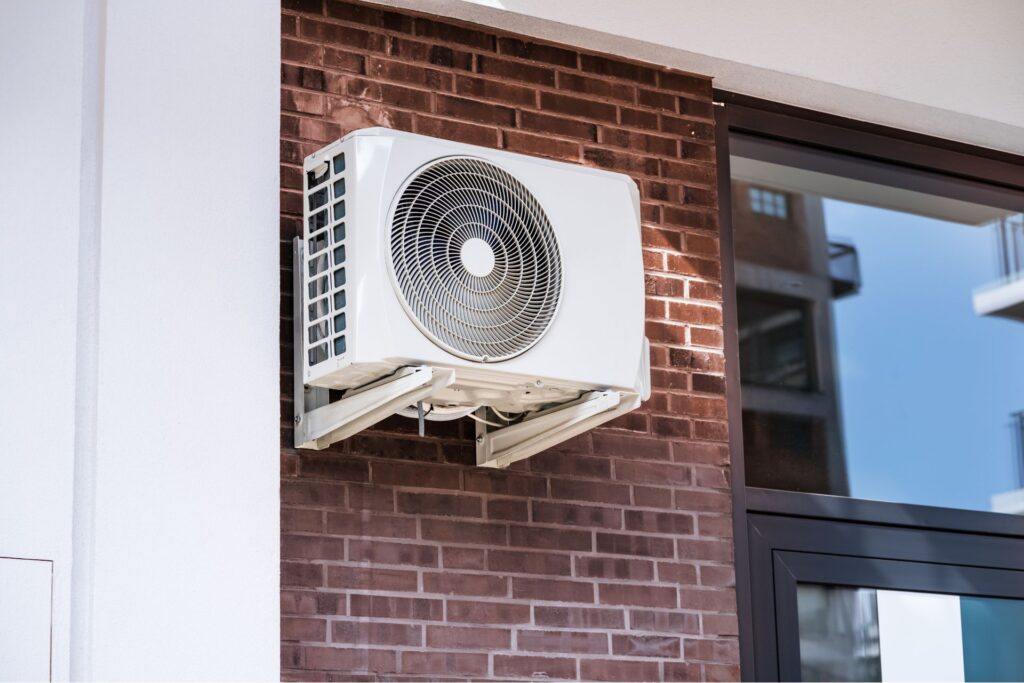Welcome to your ultimate guide on the different types of roof tiles in New Zealand! Whether you’re building a new home or renovating your current one, choosing the right roofing material is crucial for both its durability and the overall look of your property. With New Zealand’s varied climate, from coastal areas to mountainous regions, finding the perfect roof tiles that balance style, practicality, and cost is essential. In this post, we’ll walk you through the most popular roofing options available, so you can make an informed decision that suits both your needs and your home’s unique character.
The most common types of roof tiles in New Zealand include concrete, clay, metal, slate, and composite tiles. Concrete tiles are durable and affordable, while clay tiles offer a classic, eco-friendly option. Metal tiles are lightweight and rust-resistant, making them ideal for NZ’s coastal regions. Slate tiles provide luxury and unmatched longevity but come at a higher cost. Composite tiles, made from recycled materials, offer a modern, lightweight alternative. Each type has its pros and cons, depending on the climate, budget, and aesthetic preferences of homeowners in New Zealand.
- Why Roof Tile Selection Matters In New Zealand
- Common Materials Used In Roof Tiles In NZ
- Factors To Consider When Choosing Roof Tiles In NZ
- Popular Roofing Trends In New Zealand
- Cost Breakdown Of Roof Tiles In NZ
- Maintenance And Care For Roof Tiles
- Pros And Cons Of Different Roof Tiles In New Zealand
- How To Choose The Right Roofing Contractor In NZ
- FAQs: About The Different Types Of Roof Tiles NZ
- Conclusion
- Find A Professional Roofing Company Near You!
Why Roof Tile Selection Matters In New Zealand
When it comes to building or renovating homes in New Zealand, one of the most important decisions homeowners face is choosing the right roof tiles. Roof tile selection goes beyond just aesthetics it’s crucial to the overall functionality and longevity of the home, especially in a country like New Zealand, where the climate can be unpredictable and extreme. Here’s why making the right roofing choice is essential.
New Zealand Climate Considerations
New Zealand’s unique geography means that weather conditions can vary significantly from one region to another. From the salty sea breezes along the coasts to the cold winds in the mountainous regions, each area presents distinct challenges for roofing materials.
For homes situated in coastal regions, salt spray from the ocean can corrode certain materials faster. This makes it crucial to choose roof tiles that are highly resistant to salt and moisture damage. Terracotta and concrete tiles, for example, are well-known for their resilience in such environments, offering natural protection against corrosion and helping to maintain structural integrity.
Inland and mountainous areas, on the other hand, are more likely to experience heavy rain, snowfall, and high winds. For these regions, roofing materials need to be able to withstand constant exposure to water and strong gusts. Tiles with a high level of water resistance and wind uplift protection are essential to prevent leaks, structural damage, or worse, complete roof failure during storms. Proper roof tile selection based on local climate conditions can save homeowners from costly repairs and ensure long-term stability.
Durability and Longevity
Choosing the right roof tile can have a significant impact on the long-term durability of a home’s roof. In New Zealand, weather can shift dramatically from one season to another, and the roof is the first line of defense against these elements. High-quality roof tiles are designed to last for decades, often outliving other building materials when selected correctly.
Concrete and terracotta tiles, for instance, are among the most durable options on the market, offering longevity that can exceed 50 years with proper maintenance. They can withstand the intense UV rays of the New Zealand sun without warping or fading, ensuring the roof retains its structural integrity and aesthetic appeal for the long haul. Additionally, these materials are fire-resistant, which adds another layer of protection, particularly in rural or forest-adjacent areas where wildfires can be a risk.
Selecting inferior or inappropriate tiles for New Zealand’s weather conditions can lead to frequent repairs, roof leaks, and in extreme cases, complete roof replacement. The investment in durable and weather-appropriate tiles pays off in the long run, reducing maintenance costs and increasing the overall lifespan of the home.
Aesthetic Appeal
While functionality is crucial, the aesthetic appeal of roof tiles should not be overlooked. The roof is one of the most visible aspects of a home, significantly impacting its curb appeal and market value. A well-chosen tile can complement the architectural style of the house, adding character and enhancing its overall visual impact.
In New Zealand, where homes range from traditional villas to contemporary designs, roof tile options are varied. Homeowners can choose from a variety of colors, textures, and finishes to match their preferred style. For instance, terracotta tiles offer a classic, timeless look, while concrete tiles provide modern design flexibility with options that mimic the appearance of slate or wood.
Aesthetics go hand in hand with value. A home with a beautiful and durable roof is more attractive to potential buyers, which can increase the property’s resale value. This makes selecting the right roof tile not only a matter of personal preference but also a strategic decision for long-term investment.
In summary, roof tile selection is an essential consideration for homeowners in New Zealand, where climate and weather conditions can be harsh and varied. Choosing durable tiles, suited to local environmental conditions, and visually appealing can significantly impact the longevity, protection, and aesthetic value of a home. Whether you’re building new or renovating, investing in high-quality roofing materials is a decision that pays off both in terms of protection and property value.

Common Materials Used In Roof Tiles In NZ
Roofing is one of the most crucial aspects of home construction, particularly in New Zealand where the weather can be unpredictable. Choosing the right material for roof tiles is essential for ensuring durability, energy efficiency, and aesthetic appeal. This section dives into the most common roofing materials found in New Zealand, outlining their pros, cons, and the environments in which they thrive.
Concrete Roof Tiles
Concrete roof tiles are a popular choice in New Zealand due to their strength and versatility. These tiles are typically made from a mixture of sand, cement, and water, molded into different shapes and finishes. Once molded, they are cured to harden and gain strength, making them a durable and cost-effective option.
Pros
- Durability: Concrete tiles are known for their resilience and can last for several decades with minimal maintenance.
- Affordability: Compared to other materials like clay or slate, concrete tiles are more budget-friendly, making them an accessible option for many homeowners.
- Versatility in Design: Concrete tiles come in various shapes, colors, and finishes, allowing homeowners to customize the appearance of their roofs to suit different architectural styles.
Cons
- Heavyweight: Concrete tiles are significantly heavier than materials like metal or composite, requiring a strong roof structure to support the weight.
- Moss Build-up: In humid regions of New Zealand, particularly in the North Island, moss can accumulate on concrete tiles, which may require regular cleaning.
Best Suited For
Concrete roof tiles are well-suited for homes in regions with milder weather, where the roof structure can support the additional weight. They’re also a great choice for homeowners looking for a budget-friendly, customizable roofing option in urban and suburban areas of New Zealand.
Clay Roof Tiles
Clay roof tiles have been used for centuries, known for their natural origins and timeless appeal. These tiles are made from natural clay that is shaped and baked at high temperatures, creating a durable and visually appealing roofing solution.
Pros
- Long-Lasting: Clay tiles can last for over a century when maintained properly, making them one of the most durable roofing materials available.
- Eco-Friendly: Made from natural clay, these tiles are environmentally sustainable and can be recycled at the end of their lifecycle.
- Aesthetic Variety: Clay tiles come in various shades, shapes, and finishes, offering plenty of options for different architectural designs.
Cons
- Expensive: Clay tiles are typically more costly than other materials, both in terms of initial purchase and installation.
- Fragile: Although durable, clay tiles can crack under heavy impacts, such as during hailstorms or if walked on improperly.
Best Suited For
Clay tiles are ideal for high-end homes, historic restorations, or Mediterranean-style architecture in New Zealand. They perform best in dry, temperate regions such as the eastern parts of the South Island, where humidity levels are lower, minimizing the risk of moss or algae growth.
Metal Roof Tiles
Metal roof tiles offer a modern alternative to traditional materials while mimicking the look of concrete or clay tiles. Typically made from steel or aluminum, these tiles are lightweight and come in a variety of finishes, providing a sleek and energy-efficient roofing option.
Pros
- Lightweight: Metal tiles are significantly lighter than concrete or clay, making them easier to install and suitable for roofs with less structural support.
- Rust-Resistant: Many metal tiles are coated to prevent rust, ensuring longevity even in coastal areas exposed to saltwater.
- Energy-Efficient: Metal tiles can reflect sunlight, reducing the amount of heat absorbed by the house, which helps lower cooling costs in summer.
Cons
- Noisy in Rain: Metal roofs can amplify the sound of rain, which may be a concern in regions with frequent downpours.
- Higher Cost: While not as expensive as clay or slate, metal roof tiles can be pricier than concrete or composite options.
Best Suited For
Metal roof tiles are perfect for homes in windy, earthquake-prone regions of New Zealand, such as Wellington or the Southern Alps. Their lightweight nature and durability make them a practical choice for homes in areas subject to extreme weather conditions.
Slate Roof Tiles
Slate is a natural stone material that has been used for luxury roofing for centuries. It is one of the most durable and visually striking roofing materials available, making it a top choice for homeowners who want a premium, long-lasting roof.
Pros
- Unmatched Durability: Slate tiles can last for over a century, making them one of the most durable roofing materials on the market.
- Natural Beauty: The natural texture and colors of slate provide a timeless, elegant look that complements high-end homes.
- Eco-Friendly: Since slate is a natural stone, it is environmentally sustainable and can be recycled at the end of its lifecycle.
Cons
- Very Expensive: Slate is one of the most costly roofing materials available, both in terms of the material itself and the specialized installation required.
- Heavy: Like concrete, slate is a heavy material, which requires a strong roof structure to support it.
- Specialized Installation: Installing slate tiles requires skilled labor, which can drive up the overall cost.
Best Suited For
Slate tiles are often used in high-end or historic homes, particularly in regions such as central Otago or older neighborhoods in Auckland where their aesthetic and durability are highly valued. Due to the heavy nature of slate, homes with strong, reinforced roofing structures are best suited for this material.
Composite Roof Tiles
Composite roof tiles are a modern solution made from a blend of materials such as plastic, rubber, and other sustainable elements. These tiles are designed to replicate the look of natural materials like slate or wood while providing enhanced durability and environmental benefits.
Pros
- Lightweight: Composite tiles are much lighter than slate or concrete, making them easier and cheaper to install.
- Eco-Friendly: Many composite tiles are made from recycled materials, providing an environmentally conscious roofing solution.
- Mimics Natural Materials: Despite being man-made, composite tiles can effectively replicate the look of traditional materials, offering an aesthetic solution for modern homes.
Cons
- New to the Market: Since composite tiles are a relatively new innovation, their long-term performance in New Zealand’s unique climate may not be fully proven.
- Cost: While not as expensive as slate or clay, composite tiles can be more costly than traditional materials like concrete.
Best Suited For
Composite tiles are ideal for contemporary Kiwi homes looking for a lightweight, eco-friendly alternative to traditional roofing materials. They may be especially suitable in areas like urban Wellington, where modern architecture and sustainability are key considerations.
By understanding the unique properties of these roofing materials, New Zealand homeowners can make an informed decision that balances aesthetics, durability, and cost-efficiency, tailored to their specific location and style of home.

Factors To Consider When Choosing Roof Tiles In NZ
When selecting the perfect roof tiles for your New Zealand home, several important factors come into play. The roofing material you choose not only affects the aesthetic appeal of your home but also its functionality, durability, and overall performance in the long run. Here’s an in-depth look at what you need to consider when making your decision.
Climate and Weather Conditions
New Zealand’s diverse climate means that weather conditions can vary dramatically depending on where you live. Coastal areas experience high humidity, salt-laden air, and strong winds, while inland regions might deal with more extreme temperatures or frequent rainfall. When choosing roof tiles, it’s crucial to select materials that can withstand the specific environmental challenges of your location. For instance, clay tiles are excellent for coastal homes as they resist corrosion from salt, while concrete tiles are better suited for areas with heavy rainfall because of their durability and water resistance. Additionally, regions prone to frosts or high UV exposure need roof tiles that can handle temperature fluctuations without cracking or fading.
House Style and Design
Your roof tiles should harmonize with the architectural style of your home. New Zealand boasts a range of architectural styles, from charming bungalows and cozy coastal cottages to sleek, modern builds. Each style can be enhanced by the right roofing choice. For example, traditional homes may look best with classic terracotta or concrete tiles that offer a timeless appeal. Coastal homes often benefit from lighter-colored tiles, which reflect heat and give a laid-back beach vibe. Meanwhile, modern homes can be complemented by sleek, flat-profile tiles or metal roofing, which offer a minimalist and contemporary appearance. Always consider the overall design of your home and choose roof tiles that enhance its character rather than detract from it.
Budget
Your budget is a critical consideration when selecting roof tiles. While it’s tempting to opt for the cheapest option, it’s essential to balance cost with aesthetics, durability, and long-term performance. Cheaper materials, such as asphalt shingles, may save you money upfront but might require more frequent replacements or maintenance. On the other hand, premium materials like clay or slate tiles offer unmatched durability and visual appeal but come with a higher price tag. A cost-effective approach is to weigh the initial cost of materials against their lifespan and maintenance requirements. Choosing roof tiles that strike the right balance between affordability and quality can lead to significant savings over time.
Longevity and Maintenance
The longevity and maintenance needs of roof tiles can vary widely depending on the material. Some tiles, like metal roofing, are incredibly durable and can last up to 50 years with minimal maintenance. Others, like asphalt shingles, may need more frequent upkeep and replacement. Clay and concrete tiles are known for their longevity, often lasting several decades, but they may require occasional cleaning or moss removal to maintain their appearance, especially in humid areas. Additionally, some materials are more resistant to natural elements such as fire, wind, or hail, which can affect long-term costs. Understanding the maintenance demands of each material helps ensure your roof continues to perform well without breaking the bank on repairs.
Energy Efficiency
Energy efficiency is becoming an increasingly important factor in home design, and your roof tiles can play a significant role in regulating the temperature inside your home. Some materials, like metal and clay, are known for their reflective properties, which can help reduce heat absorption and keep your home cooler in the summer. Conversely, dark-colored tiles may absorb more heat, which could be beneficial in colder regions where you want to retain warmth. Opting for energy-efficient roofing materials can not only improve the comfort of your home but also lower your energy bills by reducing the need for heating and cooling.
When choosing roof tiles for your New Zealand home, consider how factors such as the local climate, house style, budget, maintenance, and energy efficiency will affect your decision. Investing time in selecting the right material ensures you create a roof that is not only visually appealing but also durable, cost-effective, and well-suited to the unique conditions of your environment.

Popular Roofing Trends In New Zealand
When it comes to home improvement in New Zealand, roofing trends are evolving rapidly. Homeowners are no longer just concerned with function but are looking to make sustainable and stylish choices that add value and aesthetic appeal. Let’s dive into some of the most popular roofing trends in New Zealand, which are shaping how homes look and perform in today’s world.
Sustainability and Eco-Friendly Materials
One of the most significant trends in the roofing industry across New Zealand is the shift towards sustainable, eco-friendly materials. As awareness of environmental issues grows, more Kiwis are seeking options that reduce their carbon footprint. This means that materials such as recycled metal, sustainable timber, and green roofs (roofs with vegetation) are gaining momentum.
Eco-conscious homeowners are also opting for solar roofing systems, integrating renewable energy solutions directly into their homes. These solar panels often come in sleek, modern designs, allowing homeowners to be environmentally friendly without compromising on style. Furthermore, sustainable roofs contribute to energy efficiency, helping homeowners lower their utility bills while reducing their environmental impact.
Color Choices: Trending Roof Tile Colors
Color has a powerful effect on the overall look and feel of a home, and this extends to roofing. In New Zealand, trending roof tile colors are moving towards earthy and neutral tones, which seamlessly blend with the natural surroundings. Shades like charcoal, slate gray, and deep greens are becoming popular choices for their ability to complement both traditional and modern architectural styles.
Another growing trend is the use of lighter, reflective colors, particularly in coastal areas. These colors not only provide a modern, sophisticated look but also help to keep homes cooler during New Zealand’s warmer months, as they reflect sunlight rather than absorb heat. Homeowners are increasingly considering how color can impact both the aesthetic appeal and functional performance of their roofs, especially when it comes to energy efficiency.
Mixed Material Roofs: Combining Aesthetics with Functionality
Mixed material roofs are becoming a staple in New Zealand’s roofing market, offering both aesthetic appeal and practical benefits. By blending different materials such as metal, timber, and tile homeowners can create a unique, visually striking roof that enhances the architectural features of their homes.
This trend not only allows for customization but also caters to different needs in terms of durability, cost-effectiveness, and climate adaptability. For instance, metal roofs are favored for their longevity and low maintenance, while timber can add warmth and a natural feel. Tile roofs, on the other hand, are often chosen for their insulation properties and aesthetic versatility.
Homeowners are also opting to mix materials for practical purposes, such as using durable metal on parts of the roof exposed to harsh weather conditions, while employing more aesthetic materials in sheltered areas. This approach allows for a balance between style, function, and long-term value.
The roofing industry in New Zealand is experiencing an exciting transformation, with trends driven by sustainability, style, and practicality. As homeowners continue to seek ways to create beautiful, energy-efficient homes, the demand for eco-friendly materials, modern color choices, and innovative roofing solutions is expected to grow. Whether you’re planning a new build or looking to renovate, staying informed on the latest roofing trends will ensure that your home remains stylish and functional for years to come.

Cost Breakdown Of Roof Tiles In NZ
When choosing the right roofing material for your home, it’s essential to understand the cost breakdown of different roof tiles available in New Zealand. This will help homeowners not only budget effectively but also make informed decisions about the long-term investment in their roof. Let’s dive into the various options and what you can expect to spend on each type of tile.
Concrete vs. Clay Roof Tiles
Concrete and clay are two of the most popular choices for roofing materials in New Zealand, but they come with different price tags and maintenance requirements.
- Concrete Tiles: These are generally more affordable compared to clay tiles. In New Zealand, concrete tiles typically range from $70 to $90 per square meter. They are known for their durability and strength, making them a cost-effective choice for many homeowners. Maintenance costs for concrete tiles are relatively low, but occasional cleaning and sealing may be necessary to prevent algae growth and maintain their appearance over time.
- Clay Tiles: Clay roof tiles offer a classic, aesthetically pleasing look but come at a higher price point, usually around $120 to $150 per square meter in NZ. Clay tiles are extremely durable and resistant to weathering, but they can be more fragile than concrete. Maintenance costs are slightly higher, mainly due to the specialized care needed to prevent cracks and ensure the longevity of the tiles.
Metal vs. Slate Roof Tiles
Next, we look at metal and slate tiles, which are often chosen for their distinct characteristics, both in terms of appearance and durability.
- Metal Roof Tiles: Metal roofing materials, such as steel or aluminum tiles, are a popular choice due to their lightweight nature and ease of installation. Metal tiles are typically more affordable than slate, with prices in NZ ranging from $50 to $80 per square meter. They offer excellent durability and are resistant to rust, corrosion, and extreme weather conditions. However, they can be noisy during heavy rain unless insulation is added. Maintenance is minimal, and the long-term costs are relatively low.
- Slate Roof Tiles: Slate tiles, while stunning in appearance and extremely durable, come with a significantly higher price tag. In New Zealand, slate roof tiles can range from $200 to $300 per square meter, depending on the quality of the stone. Slate is known for its incredible longevity often lasting over a century but its installation and repair costs can be high due to the specialized skills required to work with this material. While slate is low maintenance, any necessary repairs can be costly, given the weight and complexity of the material.
Composite Roof Tiles
Composite tiles are a relatively newer option on the market, combining the appearance of traditional materials like slate or wood with the advantages of modern technology.
- Cost of Composite Tiles: In New Zealand, composite tiles typically range between $100 and $140 per square meter, positioning them between traditional materials like concrete and premium materials like slate. Composite tiles are lightweight, durable, and often come with warranties that last several decades. Their maintenance requirements are minimal, making them a cost-effective option for homeowners seeking a balance between aesthetics, durability, and affordability.
Installation Costs
It’s essential to remember that the overall cost of your roofing project isn’t just about the material; labor costs play a big role too. The installation costs in New Zealand can vary based on the type of roofing material you choose.
- Concrete and Metal Tiles: These materials are generally easier to install, which means lower labor costs. You can expect installation costs to range from $70 to $100 per square meter, depending on the complexity of the job.
- Clay and Slate Tiles: Due to the heavier weight and the specialized skills required to install them properly, labor costs for these materials are typically higher. Installation for clay tiles may cost around $120 to $150 per square meter, while slate can go up to $200 per square meter or more.
Remember, a higher installation cost upfront may result in fewer repairs and longer-lasting results, making it a worthwhile investment in the long run.
In conclusion, the cost of roof tiles in New Zealand varies significantly based on the material you choose. Concrete and metal tiles tend to be more affordable, both in terms of materials and labor, while clay, slate, and composite tiles come with higher upfront costs but potentially lower long-term maintenance. Always consider both the initial investment and the future maintenance expenses when deciding on the best roofing option for your home.

Maintenance And Care For Roof Tiles
Maintaining your roof tiles is essential to ensuring the longevity of your roof and protecting your home from the elements. New Zealand’s climate, with its damp and sometimes harsh weather conditions, can take a toll on roof tiles. Regular care and upkeep can help prevent damage, prolong the life of your roof, and save you money in the long run. Here’s a comprehensive guide on how to take care of your roof tiles, including cleaning, inspections, repairs, and preventive measures.
Cleaning and Moss Removal
New Zealand’s damp environment, particularly in areas with frequent rainfall, makes roofs prone to moss, algae, and lichen growth. These can be more than just unsightly; they can retain moisture, potentially damaging your roof tiles over time. Cleaning roof tiles is one of the most common maintenance tasks, and it varies depending on the type of tile.
- Concrete tiles: For concrete roof tiles, a gentle clean with a water pressure washer is often enough to remove dirt and moss. However, be cautious not to use too much pressure, as it can damage the tiles.
- Clay tiles: Clay tiles may be more delicate, so cleaning with a soft-bristled brush and a specialized roof cleaning solution is recommended to avoid breaking or cracking them. High-pressure washing should generally be avoided unless handled by a professional.
- Metal tiles: Metal tiles are more resistant to moss and algae, but regular cleaning with a soft cloth or brush and mild detergent can help keep them looking their best.
Using an eco-friendly roof cleaning solution that prevents the regrowth of moss and algae is a good investment. In some cases, professional roof cleaners in NZ may apply a chemical treatment to prevent the quick return of moss, lichen, or algae.
Inspections and Repairs
Routine roof inspections are key to catching minor problems before they turn into major issues. In New Zealand, where weather patterns can be unpredictable, it’s wise to inspect your roof at least twice a year, especially after storms or periods of heavy rain.
- What to look for: During inspections, look for cracked, chipped, or missing tiles, as well as any visible signs of wear, such as fading, warping, or signs of water damage like leaks or damp patches on your ceiling.
- Repair costs: The cost of repairs will vary depending on the type of tile and the extent of the damage. On average, small repairs can range from $100 to $300 for basic patchwork or replacing a few tiles. If the roof has extensive damage, costs can escalate into the thousands. For clay and concrete tiles, individual tiles can be replaced fairly easily, but if you’re dealing with significant damage, it may require professional help. Metal roofs may require patching or even replacing larger sections depending on the severity of the damage.
It’s important to address any issues promptly to avoid more expensive repairs down the line. For those less comfortable climbing onto their roofs, a professional roof inspection service is highly recommended and often includes a detailed report with pictures of problem areas.
Preventive Measures
Preventive maintenance can go a long way in extending the life of your roof tiles. In New Zealand’s climate, where heavy rain and strong winds are common, taking the right precautions can save you time, money, and headaches.
- Sealing tiles: Applying a sealant to roof tiles can provide an additional layer of protection against moisture and UV damage. Sealants are particularly beneficial for clay and concrete tiles, which can be porous and prone to absorbing water. Over time, this absorption can lead to cracks, so sealing your roof tiles can prevent water ingress and subsequent freeze-thaw damage during colder months.
- Protective coatings: For metal roofs, a protective coating can help prevent rust and corrosion, especially in coastal areas where saltwater exposure is a concern. These coatings can also enhance the tiles’ resistance to UV radiation, reducing the risk of fading and deterioration due to sunlight.
- Gutter maintenance: Keeping gutters clean and free of debris is another simple yet effective preventive measure. Clogged gutters can cause water to pool on the roof, leading to leaks and tile damage. Regularly clearing leaves, twigs, and other debris from your gutters helps ensure proper water flow and protects your roof from excess moisture.
- Trimming nearby trees: Overhanging branches can pose a threat to your roof, especially in windy conditions. Regularly trimming trees near your home can prevent branches from falling onto your roof and causing damage to the tiles.
By investing in these preventive measures, you’ll not only extend the life of your roof but also improve your home’s overall weather resistance, ensuring that your roof stays in excellent condition year-round.
Regular maintenance and care for roof tiles are essential to avoid costly repairs and extend the life of your roof. Whether it’s keeping your roof clean from moss and debris, conducting periodic inspections, or taking preventive measures like sealing tiles and cleaning gutters, these steps will help protect your investment. In New Zealand’s climate, where moisture and weather fluctuations can be a challenge, staying on top of roof care is crucial. Be proactive, and your roof will continue to protect your home for years to come.

Pros And Cons Of Different Roof Tiles In New Zealand
When choosing the best roofing material for your home in New Zealand, it’s essential to weigh the pros and cons of each type of roof tile. Each material offers unique advantages and drawbacks, depending on your location, climate, and specific needs. Below is a detailed guide to help you compare the different roof tiles available in New Zealand, along with a quick decision guide for easy reference.
Concrete Roof Tiles
Pros
- Durability: Concrete tiles can last up to 50 years, making them a long-lasting option.
- Cost-Effective: Generally more affordable than clay or slate tiles.
- Low Maintenance: Requires minimal maintenance over time.
- Fire Resistant: Concrete is non-combustible, providing a safety advantage in areas prone to wildfires.
- Customizable: Available in a variety of colors and styles to suit different architectural designs.
Cons
- Weight: Heavy, which may require extra reinforcement in the roof structure.
- Porous: Concrete can absorb moisture over time, leading to mildew or moss growth.
- Weathering: The color of concrete tiles may fade over time, especially in extreme weather conditions.
Clay Roof Tiles
Pros
- Aesthetic Appeal: Offers a traditional and elegant look, often preferred in Mediterranean-style homes.
- Durability: Like concrete, clay tiles can last 50 years or more.
- Eco-Friendly: Made from natural materials and can be recycled.
- Low Maintenance: Resistant to pests, rot, and insect infestations.
- Heat Insulation: Helps in keeping homes cooler in warmer climates.
Cons
- Cost: Clay tiles are typically more expensive than concrete tiles.
- Fragility: More prone to breaking under impact (e.g., falling tree branches).
- Heavy: Similar to concrete, clay tiles are heavy and may require structural reinforcement.
- Limited Color Options: While natural, the color range is limited compared to other tile types.
Metal Roof Tiles
Pros
- Lightweight: Metal tiles are much lighter than both concrete and clay, reducing the need for structural support.
- Rust-Resistant: Especially ideal for coastal areas where saltwater exposure is a concern.
- Energy Efficient: Reflects sunlight, helping to keep homes cooler in the summer months.
- Durable: Highly resistant to extreme weather conditions, including high winds and heavy rain.
- Long Lifespan: Can last 40-70 years with proper care.
Cons
- Noise: Can be noisy during rain or hailstorms, though insulation can help mitigate this.
- Denting: Prone to dents from impacts such as hail or falling debris.
- Cost: More expensive than concrete or asphalt options, though cheaper than slate or clay.
Slate Roof Tiles
Pros
- High-End Look: Provides a sophisticated, timeless appearance that enhances curb appeal.
- Extremely Durable: Slate can last 75-100 years or more, making it one of the most durable roofing materials.
- Fireproof: Naturally resistant to fire, adding an extra layer of safety.
- Eco-Friendly: Made from natural stone and can be recycled.
- Low Maintenance: Very little maintenance is required over its lifespan.
Cons
- Cost: One of the most expensive roofing materials available.
- Weight: Very heavy, requiring reinforced roofing structures.
- Complex Installation: Requires skilled labor for installation, adding to the overall cost.
- Brittleness: Can crack or chip under heavy impact.
Asphalt Shingles
Pros
- Affordability: One of the most cost-effective roofing materials available.
- Ease of Installation: Relatively easy and fast to install.
- Variety: Available in a wide range of colors and styles to match different home designs.
- Lightweight: Does not require additional roof reinforcement.
Cons
- Shorter Lifespan: Typically lasts 20-30 years, shorter than other materials like slate or metal.
- Susceptible to Wind Damage: Can be blown off during strong winds or storms.
- Environmental Impact: Not eco-friendly as they are made from petroleum-based materials and can contribute to landfill waste.
Quick Decision Guide for Choosing Roof Tiles
- Coastal Areas: Choose metal roof tiles for rust resistance and durability in salty environments.
- Budget-Friendly: Opt for asphalt shingles or concrete tiles if you’re looking for an affordable solution.
- High-End Appeal: For luxury aesthetics, slate tiles offer unmatched elegance and longevity.
- Durability Concerns: If longevity and low maintenance are key, clay or slate tiles are excellent choices, though they come at a higher cost.
- Lightweight Requirements: If your home cannot support heavy roofing, go for metal roof tiles to avoid structural modifications.
When choosing the best roofing tile for your home in New Zealand, it’s crucial to consider factors like location, climate, budget, and aesthetics. This guide should help you weigh the pros and cons of different roof tiles and make an informed decision that suits your specific needs.

How To Choose The Right Roofing Contractor In NZ
When it’s time to repair or replace your roof, selecting the right roofing contractor is a crucial step that can make or break your project. Roofing is a significant investment, and choosing a reputable contractor ensures that the job is done efficiently, safely, and within your budget. Here’s a guide to help you find the right roofing contractor in New Zealand, including what qualities to look for, the right questions to ask, and the relevant NZ roofing regulations.
Qualities to Look For
Choosing a roofing contractor isn’t just about who offers the lowest price. There are several important qualities that you should prioritize to ensure you hire someone who can deliver quality results:
1. Local Experience: One of the most important aspects to consider is the contractor’s local experience. A contractor who has worked in New Zealand understands the unique weather conditions that roofs must endure, from heavy rain to high winds. Their experience in the local market also means they’ll be familiar with the materials that work best for New Zealand homes and know the necessary compliance regulations.
2. Proper Licensing and Insurance: In New Zealand, roofing contractors are required to hold certain licenses and insurance. Always check if your contractor is registered with Licensed Building Practitioners (LBP). Insurance is equally crucial, as it protects both the contractor and the homeowner in case of accidents or damage during the project.
3. References and Reviews: A reliable roofing contractor should provide references from previous clients. Checking online reviews can also give you insight into their work quality and customer satisfaction. A well-established contractor will have a portfolio of completed projects and be more than happy to share references upon request.
4. Transparent Communication: Clear communication is essential in any contractor-client relationship. A great contractor will be upfront about pricing, timeframes, and any potential issues that may arise during the project. They should be easy to reach and responsive to your questions.
5. Warranty and Guarantees: A reputable roofing contractor will offer warranties on both the materials used and their workmanship. This provides you with peace of mind knowing that should any issues arise after the installation, you’ll be covered.
Questions to Ask
Before hiring a roofing contractor, there are several important questions you should ask to ensure they are the right fit for your project:
1. What is your experience with roofing in my area?: A contractor with local experience will better understand the specific needs of homes in your region and the best materials to withstand NZ’s climate.
2. Can you provide a detailed cost estimate?: It’s essential to get a written estimate that breaks down all costs involved, including labor, materials, and any additional charges. This ensures transparency and prevents hidden costs later in the project.
3. What type of roofing materials do you recommend?: Discuss the pros and cons of different roofing materials with your contractor. Depending on your location, some materials may be more suited to your needs. The contractor should explain the benefits of each material and how long they typically last.
4. What is the expected timeline for completion?: It’s important to establish a clear timeline so you know when the project will start and finish. Delays can be costly and inconvenient, so a contractor who commits to a reasonable timeframe is a good sign.
5. Do you provide warranties on both materials and workmanship?: Ensure that your contractor offers warranties for both. This ensures that if there are any issues post-installation, such as leaks or faulty materials, they’ll be fixed without additional costs to you.
6. Do you comply with all local building regulations?: Roofing contractors in NZ must adhere to specific building codes. Ask if they are familiar with these regulations to avoid any compliance issues that could lead to fines or penalties down the road.
7. Can I see some of your past work?: A trustworthy contractor will have no problem showing examples of past projects, including photos or addresses where you can see their work firsthand.
NZ Roofing Regulations
Roofing in New Zealand is governed by several regulations to ensure safety and structural integrity. These include the New Zealand Building Code, which sets out specific requirements for roofing materials and installation methods. Key considerations include:
- Weather-tightness: Roofs must be installed in a way that prevents water ingress, a critical factor given NZ’s often unpredictable weather.
- Structural Support: Roofs must meet strength standards to withstand wind, snow, and other environmental factors.
- Licensed Building Practitioner (LBP): In New Zealand, anyone carrying out restricted building work on roofs, such as structural repairs, must be an LBP. Hiring an LBP-certified contractor ensures the work complies with national building standards.
Before starting any roofing project, it’s a good idea to consult your local council to ensure that your contractor’s work will meet all the necessary codes and regulations. This is not only essential for the safety of your home but also if you ever decide to sell your property, as non-compliant roofing can be a liability.
By keeping these factors in mind and doing a little research, you can confidently choose the right roofing contractor in New Zealand. Taking the time to ask the right questions and ensure the contractor is qualified will save you from headaches and costly repairs down the road.

FAQs: About The Different Types Of Roof Tiles NZ
Conclusion
In conclusion, selecting the right roof tile is a crucial decision that should be made with careful consideration of your local climate, the architectural design of your home, and your budget. By weighing these factors, homeowners can make a choice that not only complements their home’s aesthetics but also ensures long-term durability and protection. Consulting with a local roofing expert or contractor is highly recommended, as they can provide personalized advice tailored to your specific needs and conditions. Investing in the right roof tile not only enhances your home’s beauty but also its overall resilience, making it a smart decision for both the present and the future.
Find A Professional Roofing Company Near You!
- Auckland Roofing Company
- Cambridge Roofing NZ
- Central Otago Roofing Services
- Hamilton Roofing Services
- Hastings Roofing Company
- Hawkes Bay Roofing Company
- Kapiti Coast Roofing Services
- Lower Hutt Roofing Services
- Napier Roofing Company
- New Plymouth Roofing Company Taranaki
- North Shore Roofing Company
- Orewa Roofing Company
- Porirua Roofing Services
- Roof Painting Company Auckland
- Roof Repairs Manukau
- Roof Repairs Takanini
- Roofers Papakura
- Roofing Company Invercargill
- Roofing Contractors Northland
- Roofing Contractors South Auckland
- Roofing Contractors Whangarei
- Roofing Palmerston North
- Roofing Waikato
- Roofing Walkworth
- Roofing Wellington
- Te Awamutu Roofing
- Upper Hutt Roofing Services
- Warkworth Roofing Company
About the Author:
Mike Veail is a recognized digital marketing expert with over 6 years of experience in helping tradespeople and small businesses thrive online. A former quantity surveyor, Mike combines deep industry knowledge with hands-on expertise in SEO and Google Ads. His marketing strategies are tailored to the specific needs of the trades sector, helping businesses increase visibility and generate more leads through proven, ethical methods.
Mike has successfully partnered with numerous companies, establishing a track record of delivering measurable results. His work has been featured across various platforms that showcase his expertise in lead generation and online marketing for the trades sector.
Learn more about Mike's experience and services at https://theleadguy.online or follow him on social media:

